Car Dealer Websites by Autoweb Design
Get the Website Your Dealership Deserves. Built by Experienced Automotive Experts.
Dealership Websites That Stand Out
You want your website to stand out from the competition. You want to leave a lasting impression about your dealership with car buyers. We can help you achieve your goals. We provide car dealer websites for automotive retailers of all sizes. Our clients range from small independent to AM top 100 groups.
Included in All Packages
- Stock Feed Management
- Content Management System
- SEO Optimised Architecture
- SEO Migration
- OEM Updates (Franchise Dealers)
- Adaptive Web Design
Our Approach to Website Design & Build
Choosing the right partner to develop your car dealer website is crucial. It's important to consider design, creation, and maintenance. Our complete approach ensures that we build your site to the highest standard. We have provided an overview of our approach here.
Automotive Content Management
CMS is short for content management system. Our car dealership CMS simplifies your daily tasks. Dealers use the system to keep website content and media up-to-date. Automotive functions make creating engaging vehicle ads quick and easy. Our CMS is user-friendly, even if you are not technical.
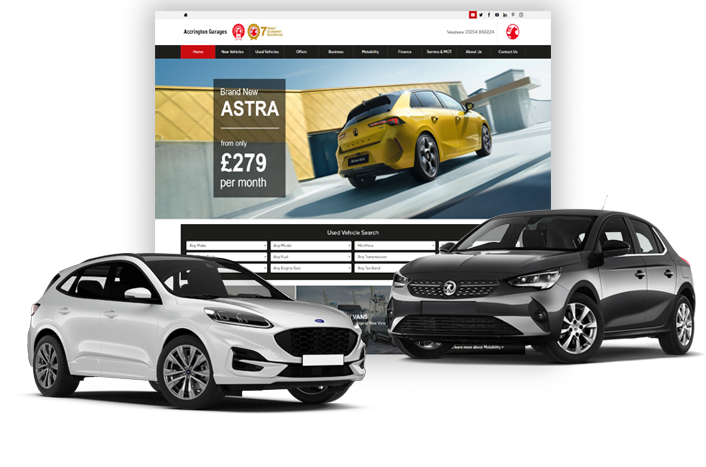
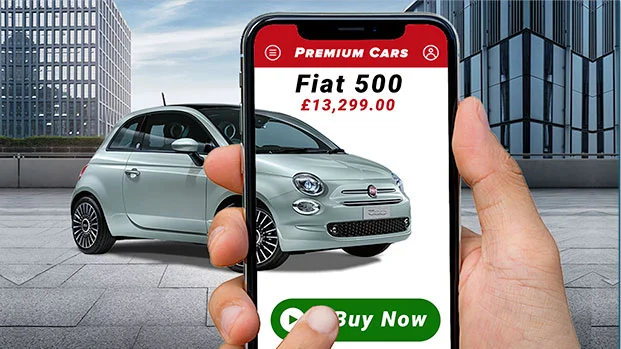
Adaptive Website Design Approach
We follow an adaptive website design approach. This approach meets the needs of website visitors using different devices. We ensure your website visitors have a great experience on all screen sizes.
We design to fit each device's features for the best user experience. This approach does more than just change the size and position of page elements. Making a great experience means considering factors for all devices. These factors include navigation, presentation, and interactive features.
The benefits of our design approach are clear to see in website performance. By crafting your website, we improve user contentment. A seamless user experience across devices promotes better performance. We generate more website leads and improve search engine rankings.
UI, UX, and CX Excellence
A good-looking website is only the beginning of a great online presence. Our team creates designs that are more than just pretty. We ensure your site visitors have a great experience that's easy to control.
To achieve your goals, we focus on UI, UX, and CX excellence. We use these vital elements in our web design and development process. We build websites that are both eye-catching and user-focused. With a user-focus, you gain a pleasant experience for your audience.
We create user-friendly interfaces that help users engage with your website. We achieve this through a meticulous design stage.
In addition to UI and UX, we focus on customer experience (CX). CX is used to establish lasting ties with your audience. We create an online presence to encourage a memorable website visit. We aim to foster feelings of trust and connection with your car dealership.
With CX design, we create an experience that cultivates customer loyalty. Loyalty leads to greater success for your dealership. Gaining this loyalty is key in the competitive automotive sector.
We create websites that provide a complete digital experience. Our sites help you connect with your customers.

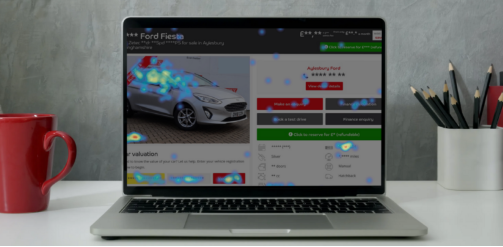
Conversion Rate Optimisation (CRO)
We help you attract and retain customers. We perfect your website through analysis and A/B testing. Call-to-action is a key part of this work.
We don't just want website traffic. We aim to make the user experience smooth and engaging. This leads to actions like enquiries or test drives. Our experts use advanced tools to analyse user behaviour. Doing this means they can identify barriers to conversion.
With A/B testing, we can test different versions of your website elements. We then identify which choices yield the most successful conversion rates.
This approach, grounded in evidence, empowers you to make informed decisions. Such decisions may be about page design or positioning of content. They could be about any elements that impact users on your dealership site. We aim to improve lead generation, increase sales, and enhance ROI.
SEO-Friendly Architecture
Search engine appearance is vital for your website's traffic. We have a wealth of knowledge in SEO strategies. Our team can advise you on current industry trends. We will work with you to boost your website's position in search engine results.
We structure your website to make finding your content easy for search engines. The structure promotes higher rankings in search results. We prioritise clean code for fast-loading, user-friendly websites. These rank well on search engines. We cover meta tags, headings, and tuned-up images for SEO.
We are committed to SEO excellence. This commitment helps your website rank higher and attract more organic traffic. We create websites that provide a complete digital experience. We help you connect with your customers.
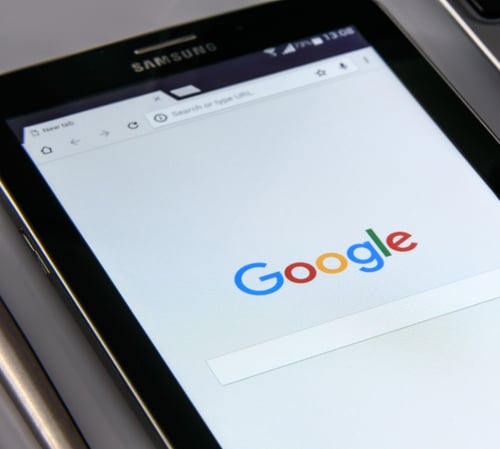
Car Dealer Website Design by Industry Experts
Experienced Automotive Web Designers
At Autoweb Design, we have been designing car dealer websites since 2004. Since day one, a lot has changed but one key thing has remained constant. We design websites to look great and perform for our dealership clients. These sites generate leads online, over the phone or through showroom visits.
We offer three types of design services. These cover a wide range of budgets, timescales and goals. If you'd like to know which would be a good match for you, please read on.
Let's dispel a myth. The approach we're asked about most often is bespoke car dealer website design. Some say you need to 'go bespoke' to have an attractive site that looks different. This isn't true.
All of our design services follow an adaptive design approach. This is in place of the basic responsive or mobile-first approach. Such approaches are common in the automotive industry.
We ensure that your website performs on all screen sizes. We ensure your site found by search engines like Google. We cover both aspects, whichever service you choose.
Are Autoweb a Good Fit?
Let us show you what we can do for you. This is the best way to decide if we're the right partner to launch your website.
Features
- Choice of Layouts
- Customised Branding
- Fastest Deployment
- Optimised for Lead Generation
- SEO Optimised Architecture
Features
- Select from Library of Components
- Customise Components
- Design Section Layouts
- Optimised, Robust Web Elements
- CMS Elements Configured
Features
- Design Components Based on Software
- Most Flexible Option
- Backed by Robust Software
- Tailored Wireframing
- Design Project Planning
Bespoke Car Dealer Website Design & Other Options
Bespoke design is all about creating a completely tailored website. The site is designed uniquely for a particular dealership.
This service is sometimes referred to as bespoke car dealer websites. The approach is not a quick or cheap process. If you find 'bespoke' offered cheap or fast, the chances are it's a custom design. We cover custom design in the next section.
Bespoke design involves working closely with our talented web designers. They design the website from scratch, including all the design elements you want. This approach allows you to match your website with your brand perfectly. You can meet specific user experience needs.
It's important to know that bespoke design takes time and resources. This is due to the number of steps needed. We must create wireframes, prototyping, and high-fidelity design mock-ups.
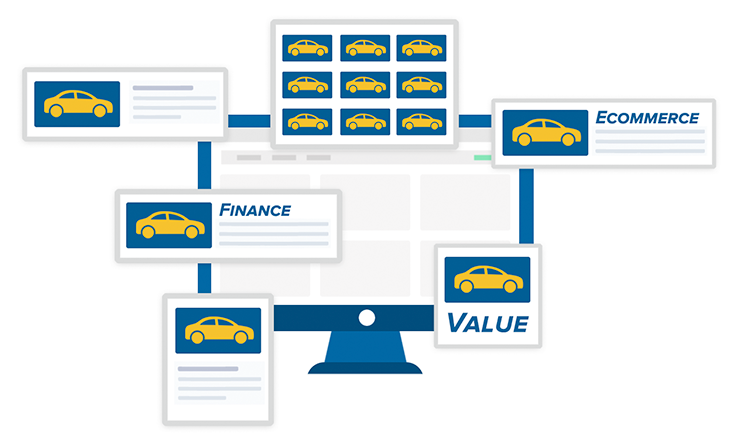
Custom Dealership Website Design
Custom design is similar to bespoke design but with a key difference. It works within an existing framework or platform. Instead of starting from scratch, web designers use established website builders. We use our CMS (Content Management System) as a starting point for creative work.
At Autoweb we have a platform called Fraternity. This contains a wide range of automotive website elements. We can style these in a highly customised way, making them look unique.
With custom design, our designers modify and adjust existing modules. These could be templates, layouts, and elements. The key goal is to meet your specific visual needs.
Custom website design strikes a balance between result and price. It's ideal for those who want a unique website with budget or time constraints.
Templated Design
Templated design is very popular with car dealers. It involves using pre-designed car dealer website templates or themes. These offer ready-made layouts, styles, and functions.
Templates are commonly available through content management systems (CMS). An example of a CMS is WordPress. You may also find themes on third-party marketplaces.
The problem with these themes is that they don't usually work for a car dealer. They lack integrations or features that dealers rely on. You would get these by working with an automotive specialist agency.
There are common examples where non-automotive solutions can fall down. These include vehicle stock feeds, finance calculators, and valuations. With us, you're covered.
Templated design is an efficient solution based on time and money. Dealers that use templates know that they are using a robust website layout. The layout is trusted by many other dealers to perform. What's more, they don't need to invest time and effort in going through design ideas.
These same dealers can ensure the website is customised. This is to reflect their colour scheme, logo and branding through content. With our automotive website template option, you choose from a range of layouts. You can then personalise the layout with your content. Content includes text, images and other media. You can also define fonts and colour scheme.
We'd suggest this route if you want a high-performance site without lengthy design. You can choose a fully responsive template with an adaptive approach. However, it's important to note that templates have limits on what you can change.

How Does Your Website Score?
Request a free audit and analysis of your automotive website.
Why You Should Work With Autoweb Design
Choosing the best car dealer website provider for you is important. We want to explain how we distinguish ourselves from others in the industry. To do so, we outline the defining features of our offering on this page. Some of these may apply to other providers. However, our unique combination sets us apart.
We're Automotive and Digital Experts
We're experts in software for car dealers, with twenty years' experience. We understand your daily needs and deliver quick and reliable service. Our team's experience comes from automotive as well as other sectors. This team has talent from digital marketing to web design.
We aim to be your trusted advisor, not just a software supplier. We'll help you keep your website up-to-date with the latest trends and website features. We've created hundreds of car dealer website designs and can help to guide you.

We're Flexible
We are a flexible agency. We don't force clients into our way of doing things. Our CMS and website platform can deliver a lot, and we keep improving it. We work with niche software providers if there's something we can't do quickly. We will find a solution that works for you.
We Work Well With Others
We remain impartial and seek holistic solutions for our clients. This might mean using our own software or services. It might also mean using third-party solutions. We want what is best for our clients. Our clients are free to choose vendors for key functions like finance integration.
We work well with third-party providers. This means that the latest dealer website features are available.


We Provide Bespoke Website Design
Many dealerships prioritise a high-performing website. As a result, most websites in the market appear similar. This isn't usually an issue due to location and competition. The important thing is that the website generates results.
In some cases, a dealer may need a distinct website to stay competitive. In these cases, we offer bespoke website design services. We ensure the user experience aligns with your marketing strategy.
Solutions By Budget
Your dealership's size or location may not define your budget. Factors like the types of cars you sell influence your budget. Explore our range of solutions to fit your budget and find your perfect match.
It's easy for web designers to make grand promises and showcase their top work. That is not our approach. We can create almost any solution for dealerships. However, it is our delivery that sets us apart. We share data openly, so you can make informed decisions.
Knowing budgets helps us give clients a good return on investment. Then, budgets can increase as clients see results. For example, drone footage is impressive, but not always feasible. There may be better uses of a smaller budget.
For those with a large budget, standard offerings may not be of interest. You may be seeking unique and creative design options. We have solutions for all budgets. If you are unsure which is the right solution for you, we can help. We can give you some example dealer website designs. Seeing these designs can help to put your needs into perspective.
Solutions for Typical Dealership Budgets
The majority of dealership websites fall within this range. Our approach here is quite different to most.
With a typical spend, we don't think dealers should settle for templated websites. Still, many do, knowingly or not.
Website templates are not a bad thing, far from it. We advocate their use when data suggests they deliver performance. We provide these at a low price point. You can then spend the remainder of your budget where you will see returns.
At a medium price point you can expect a custom design process. This process uses sets of reusable web components. We then configure the components. Components can look and feel very different depending on their use.
We are more flexible than many "bespoke" web designers. On top of this, a platform codebase is reliable.
Solutions for Smaller Budgets
Having a small budget is fine. A smaller budget means we need to focus on the most impactful things.
With a focused budget, certain things are important. We aim to provide you with the maximum return on investment. These areas are where we recommend you spend.
The most important thing here is performance. Your website needs to be visible in search engines to have visitors. From there, your website needs to be good at turning visitors into leads.
On a tight budget, the promise of bespoke builds isn't realistic or genuine. On a tight budget, the best way to profit is to use site layouts that convert. We apply your branding and website content, then watch as the enquiries come in. This approach uses a custom website.
All of our pre-fabricated website sections follow an adaptive approach. Layouts are backed by data that shows you industry-leading enquiry rates. These leads come from all devices. We structure sections to give you the best start to gaining website traffic.
Solutions for Larger Budgets
We offer bespoke website design services from a blank canvas. This service starts with information architecture plans. It includes wireframe and prototyping stages.
If you have a larger budget, then bespoke website design becomes viable. By bespoke, we mean that we start designing from scratch. We work out a user journey with you in an intensive process.
With a bespoke design, you would use our reliable platform codebase. Reusable website elements are a starting point to create your web elements. You can think of it like a boilerplate design. We layer the bespoke work onto the boilerplate. This ensures that your codebase doesn't fall behind on maintenance.
The process starts with a free initial consultation to discuss your vision. This allows us to understand your business better. It also means we can give you some ideas.
Ready to Get Started?
Let's talk about your needs and the right solution. Your new website is not far away.
Automotive Technology and Integration Experts
We provide solutions for all automotive trends. We cover online sales, financing options, and photo enhancement. We excel in managing stock feeds and DMS integrations. We know finance calculator integrations and Automotive CRM. All of this means customers see your car adverts in the right place at the right time. This includes platforms like Auto Trader and Car Gurus.
We work with all the main dealer management systems. This makes a big difference in the motor trade. On top of this we're experts at brand marketing integration (OEM). We look at new technology constantly. We're always thinking about how car dealers can use it. Our clients are often early users of the latest website features around.
We Make Useful Things
Our goal is to simplify digital marketing for car dealers. We collaborate with our clients to generate ideas. For example, we've created a system for franchise dealers to update their sites.
This system ensures compliance with brand standards. It includes updated branding, offers, and vehicle launch info. It's optional but popular and comes at no extra cost.
Backed by Data
We believe in measuring success to improve it. We back our advice with data. If something is brand new, we explain how to test technologies. Vehicle dealers across the country can show success through data. Successful partnerships are at the heart of what we do.
Our account managers focus on improving your website, not selling to you. We base our internal metrics on website performance. Performance includes the number of leads generated. The same metrics are in your website reports. Your account manager will explain the data and suggest actions. If you prefer to receive a summary by email, that's also fine.
Pricing & Packages
Pricing For Independent Dealerships
Features
- Choice of Templates
- Your Branding
- Stock Feed Management System
- Upload Images & Videos
- Online Reservation Option
- Third-Party Add-on Options
- Content Management System (CMS)
- Reporting
- SEO Migration
- Account Manager
Features
- Everything from Standard
- Custom Design
- Additional CMS Elements
- Online Reservation/Retail
Free Features
- Everything from Professional
- Bespoke Design
- Custom Integrations
Pricing for Franchise Dealerships
Features
- Automatic OEM Updates
- Choice of Templates
- Your Branding
- Stock Feed Management System
- Upload Images & Videos
- Online Reservation Option
- Third-Party Add-on Options
- Content Management System (CMS)
- Reporting
- SEO Migration
- Account Manager
Features
- Everything from Standard
- Custom Design
- Additional CMS Elements
- Online Reservation/Retail
Free Features
- Everything from Professional
- Bespoke Design
- Custom Integrations
Working With Third-Party Providers To Enhance Your Dealer Website
Car dealer website features are always evolving. Our industry is full of software companies that focus on niche features. Working in partnership provides the best solution for our clients. Our technology partners offer solutions ranging from customer reviews to background changes. Working together, we make your dealership website more engaging and interactive. We work hard to develop strong partnerships; you can find more information here.
We do not force our clients into any vendor's solution. As such, we seek to work with all automotive technology providers. You can see a selection of vendors we partner with on this page.
Some of these vendors provide offers for Autoweb clients. Please ask for the latest information. If your chosen provider is not on the list, please ask us about them.
Finance Integrations for Automotive Websites
Finance integrations for car dealer websites are very useful. They connect the website journey with lender information. FCA compliance is crucial here. There are many popular vendors of finance systems. Some lenders even provide their own website plug-ins.
Some vendors can show finance calculators for new and used vehicles. Some providers have APIs which we can use to create custom solutions. Another option is to quickly integrate finance widgets. We list some of the popular vendors we partner with here.
CodeWeavers
iVendi

iVendi provide software based around online finance applications. They provide widgets for fast deployment of credit checks or calculators. Their software is available for e-commerce uses via API. Autoweb have worked with iVendi for many years. In partnership, we have created some innovative integrations.
Evolution Funding

Evolution Funding is a motor finance solutions provider. They offer a simple finance calculator widget to their customers. The widget allows customers to apply for finance online. They have a free of charge option available subject to Ts and Cs.
Automated Part-Exchange Valuation
Automated part-exchange valuations are a good lead generator. The vendors below provide the valuation data behind these tools. You can use this data for simple price indications. You can build in more detailed appraisals. Likewise, you can use these as part of an online purchase tool.
If you don't already have a preferred provider, consider your options. Cost of lookups, valuations, and back-end can all differ. If you'd like to discuss options then please get in touch.
cap hpi
CDL

Glass's
Manheim eVA

Vehicle Imaging Software
These tools help you to present vehicle images online. You can make sure images are consistent and high-quality. Some solutions can automate vehicle video creation for you. Imagery tools can save dealers a lot of time.
Solutions range from turntable technology to mobile apps. If you would like to talk through options then get in touch.
Auto Imaging
CitNOW
GardX SpinCar

Modix 360°
Phyron
UKT360

Vehicle Data Lookups
Showing customers the right vehicle information in ads is crucial. Adding this information manually can be difficult. With a vehicle spec provider, we can automate this task. Many dealerships have preferred vendors. One reason for this is to ensure data consistency across systems.
cap hpi
CDL VIS

Glass's
Managed Live Chat for Car Dealers
Live chat gives your customers a convenient way to get in touch. Managed live chat means that chats are handled by a third-party company. Having your live chat managed means that you won't miss customer contact.
There are many live chat providers who specialise in automotive. This generally means they have automotive-trained live chat handlers. It also means they are used to the way the motor trade works. We work with all popular providers and we're adding partners all the time.
When it comes to choosing a live chat provider there are some key points. Price is important but the quality of chat should be looked at. The ability to alter the chat pop-up is useful. It is also helpful to have Google Analytics integrated.
Live chat providers have started adding more channels to their product. These channels include SMS and WhatsApp. You should try to match your preferred channels with your chat provider.
You may prefer to self-manage chats. We can add features like WhatsApp or Facebook messenger to your website. Another option is to use free live chat software. Some of the vendors below also have self-service options.
Gubagoo
ICX
Live Person (Contact at Once)

Moneypenny
Vee24

Visitor Chat

Some more website enhancements to consider

Judge Service

Signal by G3 Auctions
G3's Signal tool adds value to part-exchange options. The software helps dealers to manage valuations and inspections.

Total Chatbots

AutoConverse
AutoConverse is a revolutionary AI communication channel for your website. The platform is based on a digital representation of your dealership with discounts for Autoweb design customers.
Ready to Get Started?
Let's talk about your needs and the right solution. Your new website is not far away.






